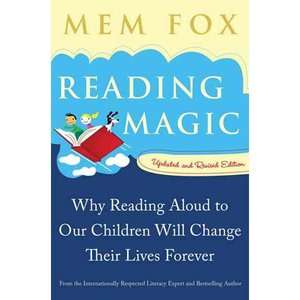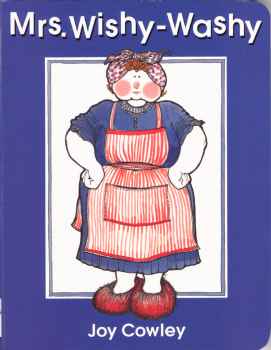Last week I presented an overview of Every Child Ready to Read to parents involved in the Bellevue Public Schools program "Parent Connections". I developed this program with the help of Every Child Ready to Read, as well as my own knowledge gained from study and practice.
I began the workshop by stressing the important role the parent(s) have as their child's first teacher and also that the practices I will be talking about are probably things they are already doing or things that can easily be incorporated into their day. As parents strive to be more mindful their interactions with their child, early literacy skills can easily be introduced and emphasized.
Often new parents feel awkward talking to an infant or singing silly songs to a toddler. But as parents understand the importance of early literacy skills they will begin to do these important activities with their child and soon those actions become natural as they see the benefits.
I think it is so important for parents to understand that they do NOT need special equipment and they can start where ever they are. It's never too early...or too late...to begin using these five practices that build early literacy skills in children.
Talking
Talking is not talking to a child, but talking with a child. Using conversational style talking and listening--allowing a baby to respond in gurgles. It is asking children questions that get them talking instead of asking questions that a child can respond to with a nod or a simple yes or no. Parents can easily build vocabulary by expanding on what a child says.
Parent: "What do you see out the window?"
Child: "Car"
Parent: "I see a big, blue car driving down the street. It is driving very fast! What else do you see?"
...and so forth.
Use wordless or nearly wordless picture books so the child can "tell the story" and you can ask questions, listen, and respond to the child. One of my favorite nearly wordless picture books is
Good Night, Gorilla by Peggy Rathmann.
The pictures tell of the story of a little gorilla unlocking the zoo cages, letting all the animals out! Children can talk about what the gorilla is doing, what animals are at the zoo and what they think will happen.
Singing
I love how singing slows down language and we begin to hear individual sounds! First, I had the group say say the rhyme "Twinkle, Twinkle Little Star". Then we sang it. We all noticed the rhythm and the syllables and individual sounds. We also noticed that it took us over twice as long to sing it as to "say" it.
I recommended listening to children's music in the car, at bed time, and during play. The library has many children's CDs they can borrow. We also have many books that can be sung. Two examples:
Raffi has all kinds of songs into books, such as The Wheels on the Bus
and books by Iza Trapani, such as
The Itsy Bitsy Spider.
I also spent a little time discussing how to create "piggy back" songs--taking a familiar tune and changing the words. For example: use the tune of "Mary Had a Little Lamb" and change the words to fit the situation, such as, "Now it's time to clean up toys, clean up toys, clean up toys. Now it's time to clean up toys so we can eat our lunch!" Singing instructions is so much more fun than yelling them (for parent and child!)
Reading
As Every Child Ready to Read emphasizes, "Reading together with your children is the single most important way to help them get ready to read." I also stress to keep the reading experience positive. Keep it fun and enjoyable! Don't force a young child to sit and listen--instead make it a bonding experience--something they look forward to! Two books I showed the parents, both by Mem Fox,
Reading Magic: Why Reading Aloud to Our Children Will Change Their Lives Forever
and her picture book,
Time for Bed.
And although parent usually groan when I remind them that re-reading books is very good for children, I stress it nonetheless. Because re-reading books is vital for children to begin to understand that the words in the book will always tell the same story in the same way. Children may even memorize the book and can then "read" the book to you! This is a perfect opportunity to then point to the printed word as they "read", thus making another connection with print.
Try reading books that have repeated phrases, actions, movement or singing.
Mrs. Wishy-Washy is an example of a book that uses a repeating phrase that children can join in on or "read".
Nursery rhymes are also a great thing to read aloud to children. They are short, fun, and easy to remember. Since they rhyme the parent can leave off the last word of a line and allow the child to fill it in, such as: "Little Bo Peep has lost her ______." Through nursery rhymes we also introduce new vocabulary that we can discuss together. What is wool, master and lane in "Baa, Baa Black Sheep?" I love
Favorite Nursery Rhymes from Mother Goose, illustrated by Scott Gustafson. The illustrations are full page and beautiful! The library has large variety of Mother Goose to choose from.

Finally, I stressed the importance of continuing to read aloud to their children even when they learn to read on their own. I learned from personal experience that reading loses much of its fun when all you are doing is sounding out words!
Here is part of my "reading journey". So I stress to parents the great opportunity to continue to share books together as their child learns to read. I recommended Jim Trelease's
The Read-Aloud Handbook which has excellent read aloud suggestions.
Writing
Writing is not just copying letters on a worksheet! Writing is using crayons, pencils, markers, chalk, paintbrushes, etc. to express themselves. Writing to learning that one can put symbols on paper of what is said and then someone else can then read it. One of the first things a child learns to write is their name, which is important to them. Children should be supported in all their writing efforts--from scribbling to "making marks" to trying to make letter shapes to first letter of the word writing. These are all stages a child goes through on their writing journey.
Writing also involves developing small motor skills. This may look a lot like play--puzzles, blocks, beads, cutting with scissors, and playdough. These kinds of activities strengthens their fingers and hands so they can control the writing utensil.
Playing
(By this time my hour was almost up, so here is what I emphasized to the parents)
Imaginative play is vital--pretending to cook, shop, take of a baby. This is the best kind of play for toddlers and preschool children. Keep "screen time" to a minimum, which includes TV, DVDs, computer games, and hand-held devices. Parents should strive to buy toys that encourage unstructured play such as blocks, balls, playdough, and pretend play toys.
I will be doing another Every Child Ready to Read presentation in October. I will be focusing on one of the five practices.




































